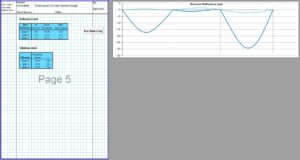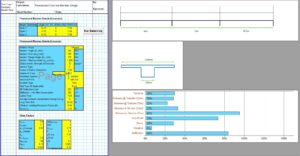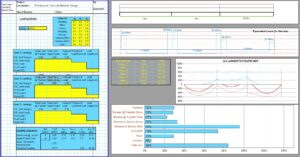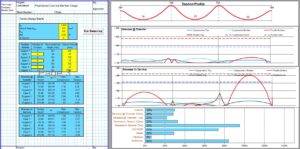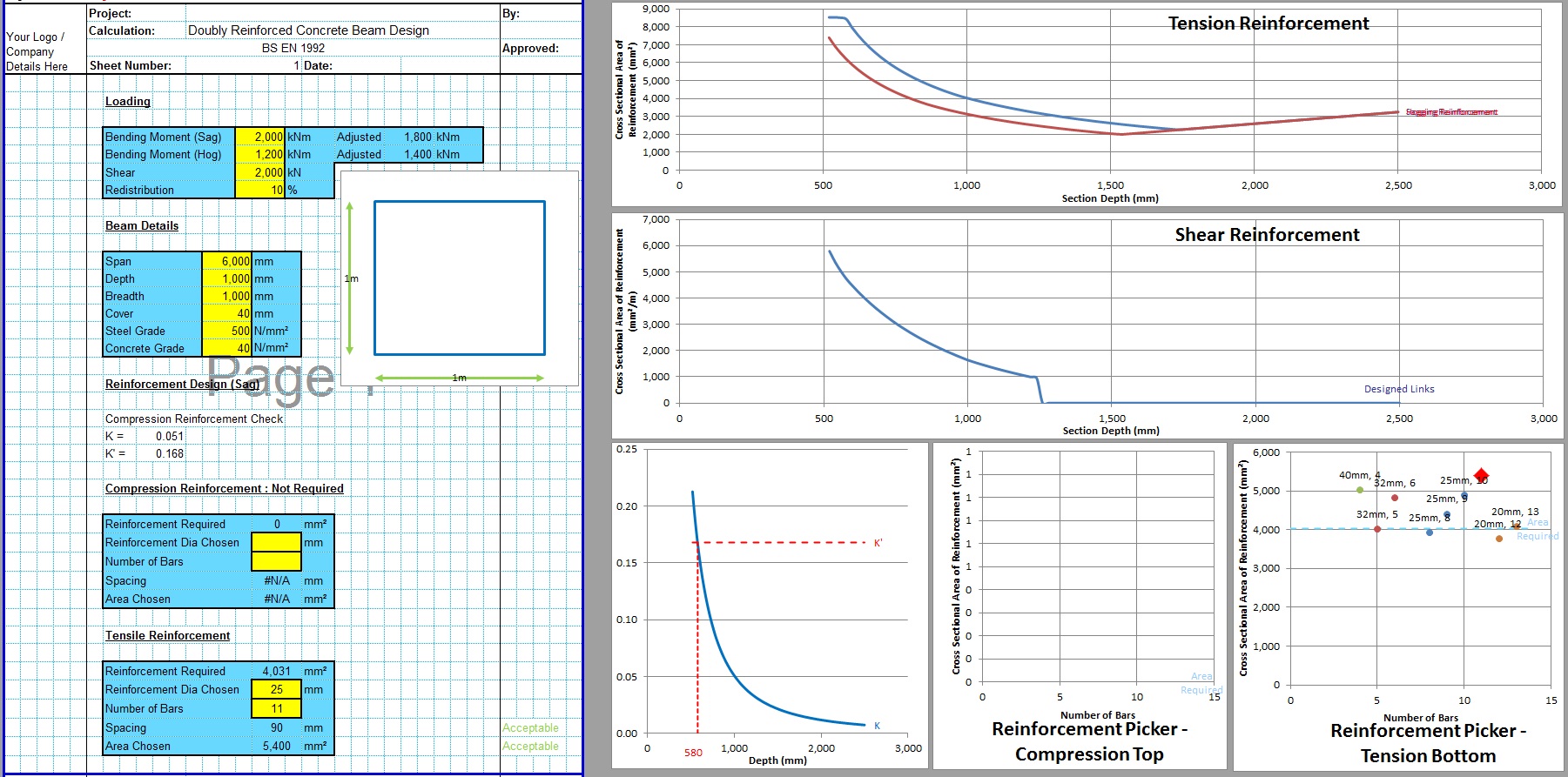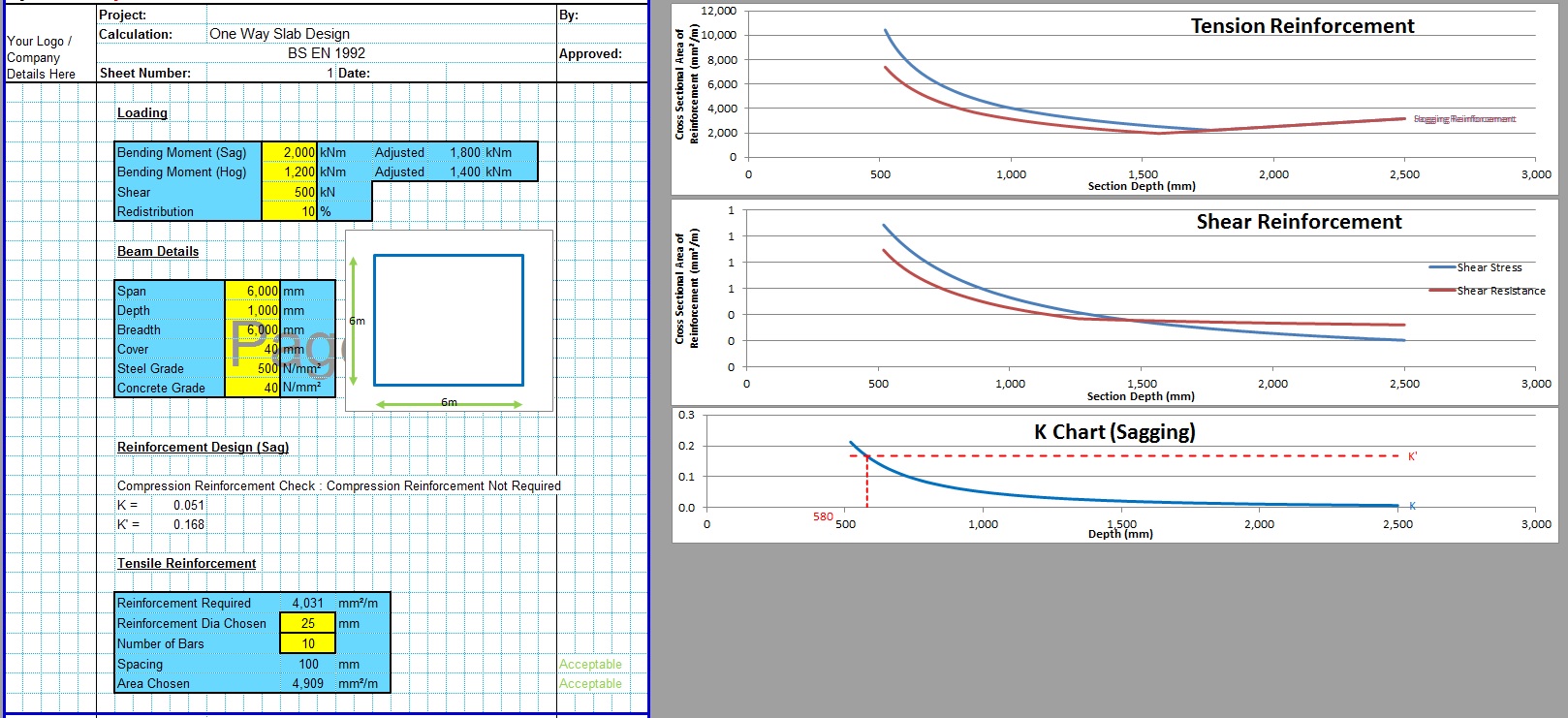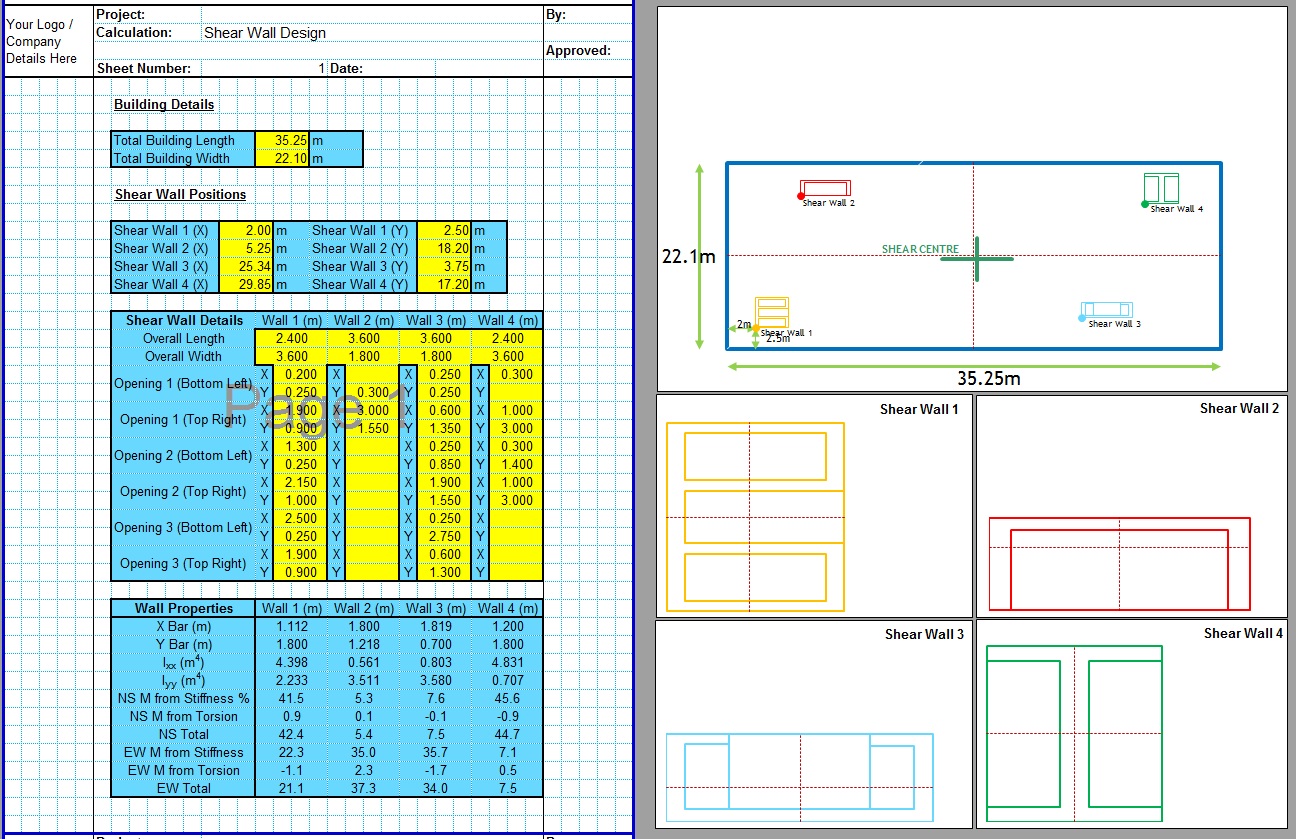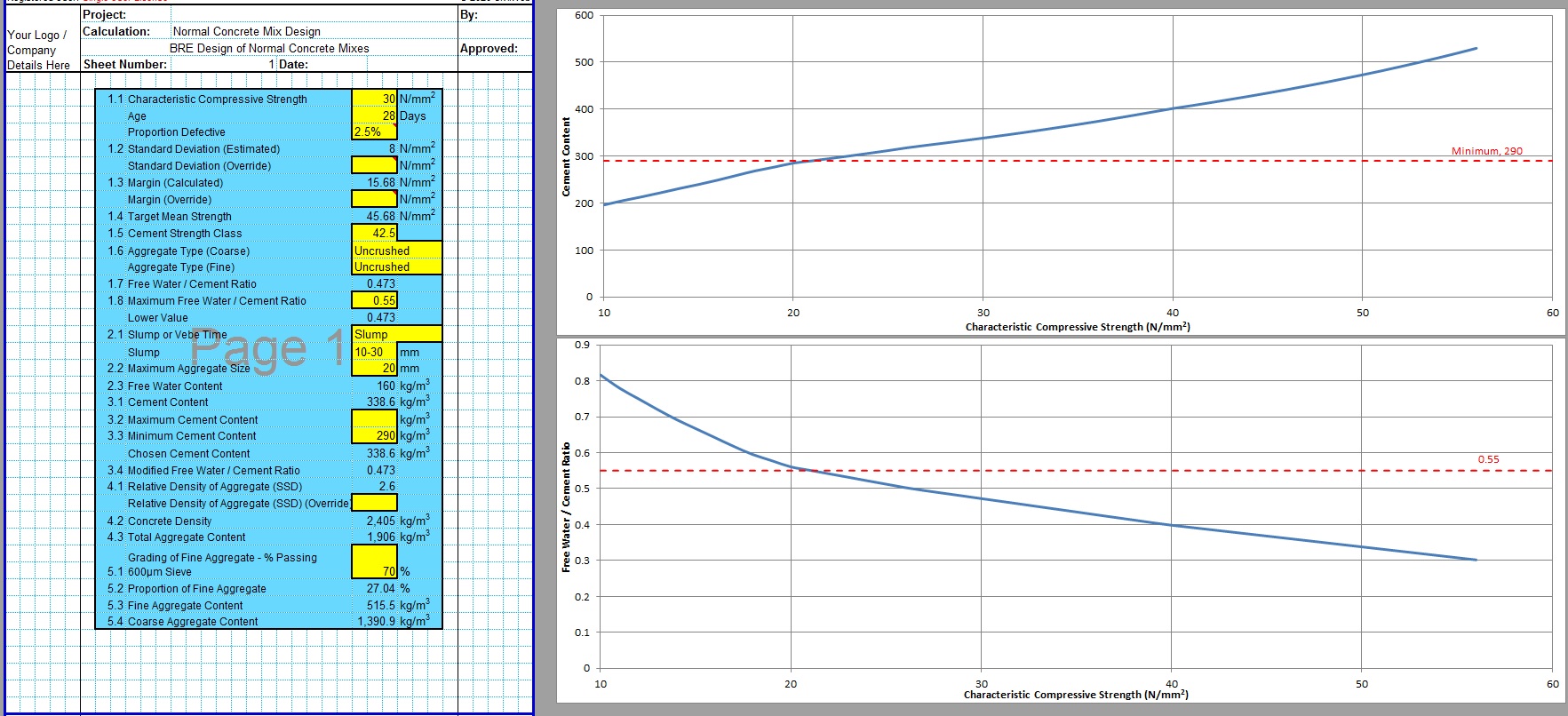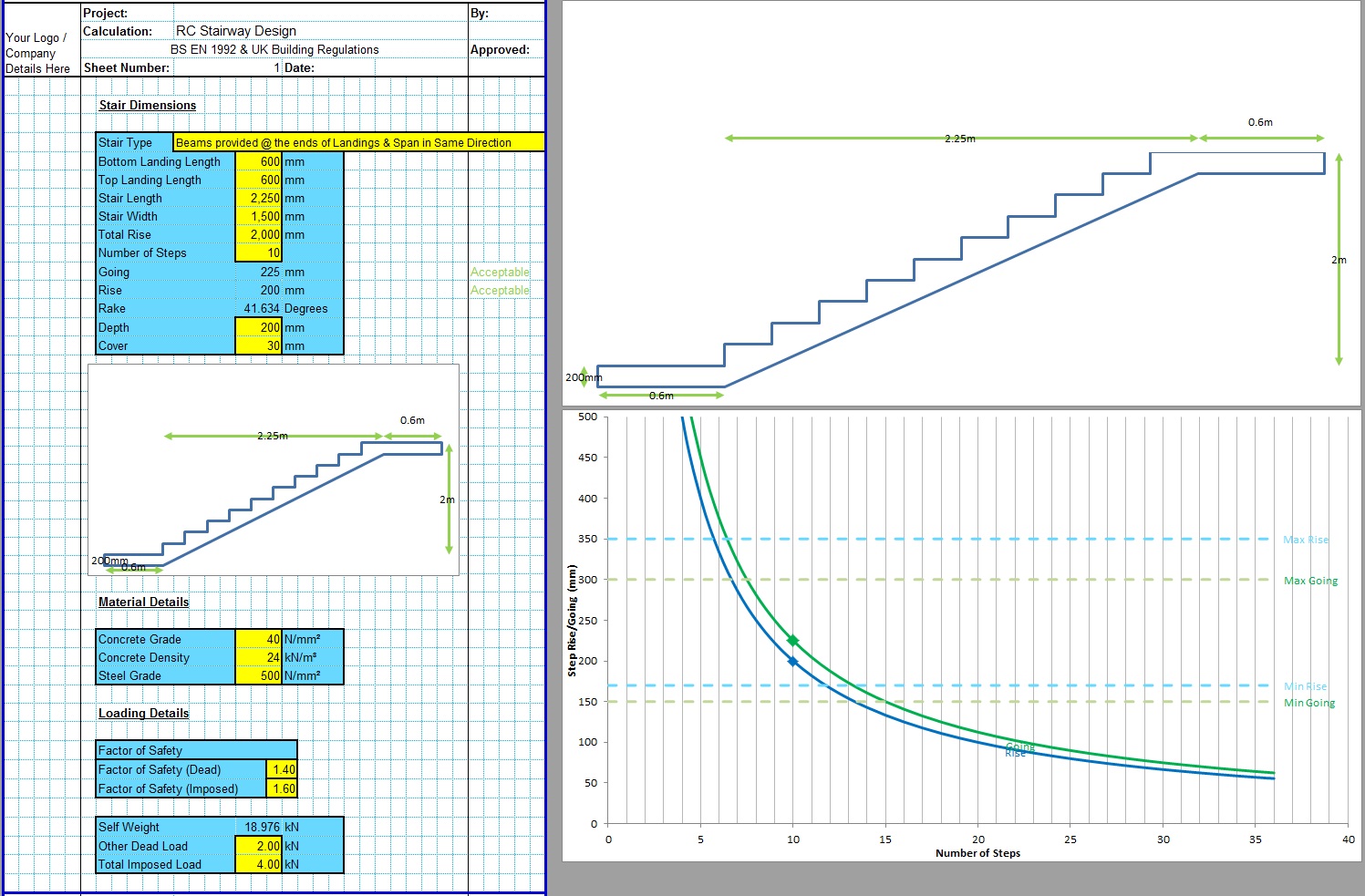The CivilWeb Prestressed Concrete Beam Design Excel Spreadsheet is a powerful design spreadsheet which can be used to complete the design of prestressed concrete beams in accordance with BS EN 1992. The spreadsheet includes unique design charts and graphs which show the designer exactly where the beam design can be optimised. Using this spreadsheet and the unique tools the designer can complete a fully optimised prestressed concrete beam design in minutes. The CivilWeb Prestressed Concrete Beam Design Excel Spreadsheet can be purchased at the bottom of this page for only £20.
The CivilWeb Reinforced Concrete Beam Design Excel Bundle including the Prestressed Concrete Beam Design Excel Spreadsheet, Design of Singly Reinforced Beam in Excel Spreadsheet and T Shaped RCC Beam Design Excel Sheet design spreadsheets is available for only £30. This bundle also includes our Beam Analysis spreadsheets for a total discount of more than 60%. Alternatively why not purchase our best value bundle, the full Concrete Design Suite which includes all of our reinforced concrete design spreadsheets. This is our best value design bundle and can be purchased at the bottom of this page for only £50.
Prestressed Concrete Beam Design
Prestressed concrete beams work by effectively transferring some of the tensile stresses in a beam into compressive stresses. Concrete is strong in compression but weak in tension. Concrete is around ten times stronger in compression and for this reason the tensile strength of concrete is usually ignored when designing a concrete beam subjected to tensile stresses from bending. Normally the reinforcing steel is designed to accommodate all of the tensile stresses which can lead to large quantities of steel being required for heavily loaded or long span concrete beams.
This is done by prestressing the beam with a compressive force using steel tendons installed through the beam. When the beam is stressed using the tendons this puts the whole of the beam (both top and bottom) into compression.
Then when the beam is subjected to a bending moment some of the tensile stresses which would be induced in the bottom of the beam are effectively cancelled out by the compressive prestressing. This effectively reduces the maximum tensile stresses and therefore reduces the amount of reinforcing steel which is required. Prestressing is also often used to reduce the beam depth which would otherwise be required. This can be done for aesthetic reasons or to reduce self-weight, leading to longer beam spans than would otherwise be possible.
Prestressed Beam Design - Inputs
First the designer must input the type of beam which is to be designed. These inputs include the section shape and dimensions, concrete specification, the type of prestressing and some other minor factors such as curing time and damping factors.
Next the designer must enter the size and number of spans and the forces which will act on the beam. The CivilWeb Prestressed Concrete Beam Design Excel Spreadsheet allows the designer to enter the loadings and partial action factors in accordance with BS EN 1991. The designer can enter loads as UDLs, partial UDLs and up to two different point loads. These can be different for each span. The CivilWeb Prestressed Concrete Beam Design Excel Spreadsheet includes useful dynamic diagrams of the beam spans and loading arrangements.
After these loads have been input by the designer, the CivilWeb Prestressed Concrete Beam Design Excel Spreadsheet then automatically calculates the bending moments and MOR acting on the beam under the input loads. The spreadsheet includes a handy summary table of these forces and draws a bending moment diagram showing the envelope of moments and MOR acting on the beam.
Next the prestressed beam design spreadsheet xls assists the designer to design the tendons. The designer can input the tendon strand area and number of tendons for each span along with the strand strength and the design properties. The designer can also input the height for the strand at the centre of each span and each support. The CivilWeb Prestressed Concrete Beam Design Excel Spreadsheet draws a handy diagram showing the designer the tendons chosen profile.
The spreadsheet then calculates the tensile and compressive stresses acting on the beam and the tendons. These stresses are calculated both at the top and at the bottom of the section. The results of this analysis are plotted on a graph which shows the designer exactly how close the stresses are to their maximum values and exactly where along the beam these stresses are highest.
If these expected stresses are acceptable, next the spreadsheet can be used to design the conventional reinforcement required. The prestressed beam design spreadsheet xls calculates the stresses in the beam and calculates the reinforcement required at the top and bottom of each span and at each support. The designer can either design each reinforcement section individually or choose to use the worst case throughout the beam. The designer selects the bar size and quantity, then the spreadsheet checks whether this is both higher than the required reinforcement and suitable with maximum and minimum steel requirements.
Finally the prestressed beam design spreadsheet xls checks the shear forces present in the beam and allows the designer to add conventional shear reinforcement if required. The spreadsheet checks the shear forces at either side of each support along the beam, where shear forces are highest.
In order to simplify and speed up the design process, the CivilWeb Prestressed Concrete Beam Design Excel Spreadsheet includes numerous additional tools and graphs which illustrate to the designer exactly what state the design is in at each design stage. This includes a handy summary table showing the utilisation of each part of the design.
This table is shown at several stages through the design process and shows the designer exactly where the beam design is not valid and also shows the designer at a glance any areas where the beam design is under-utilised and therefore exactly where there may be scope for beam design optimisation. This makes a very complicated design process much clearer and saves a great deal of time for the designer who doesn't need to check every area where the beam design is valid. It also allows the designer to check at a glance that any changes to one area of the design does not have a detrimental effect on any other parts of the design.
CivilWeb Prestressed Concrete Beam Design Excel Spreadsheet
The CivilWeb Prestressed Concrete Beam Design Excel Spreadsheet is a powerful design spreadsheet for prestressed concrete beam design. The spreadsheet completes all the calculations instantly in accordance with BS EN 1992. The spreadsheet also includes unique design analysis graphs and tools which show the designer at a glance exactly where the beam design can be improved. This allows the designer to complete a fully optimised prestressed concrete beam design in minutes.
Buy the CivilWeb Prestressed Concrete Beam Design Excel Spreadsheet now for only £20.
Buy the CivilWeb Concrete Beam Design Suite including a total of 5 different beam design and analysis spreadsheets for only £30.
Or why not buy our best value bundle, the full CivilWeb RCC Design Suite which includes all of our concrete design spreadsheets for only £50, a saving of over 80%.
Download Free Trial Version
To try out a fully functional free trial version of this software, please enter your email address below to sign up to our newsletter.
